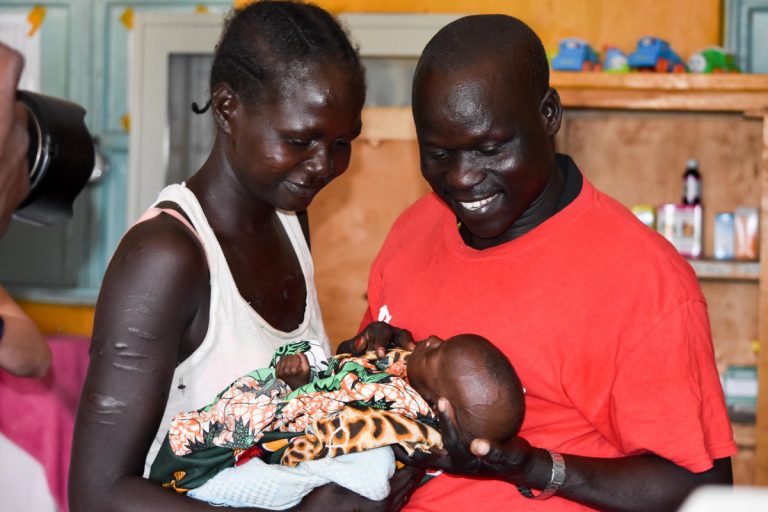This blog was originally published by The Lancet Infectious Diseases here.
By Helena Rabie, Mark Cotton, Angela Dramowski
Although mortality in children younger than 5 years in sub-Saharan Africa has declined by 58% since 1990, neonatal deaths (in infants younger than 28 days) represent an increasing proportion, currently at 37%.1 2 Infection remains the third most important cause overall, and the leading cause of late neonatal deaths is hospital-acquired sepsis.1, 4 It is within this context that, in The Lancet Infectious Diseases, Uduak Okomo and colleagues reviewed the causes of severe bacterial infections (bloodstream infection and meningitis) and the antimicrobial resistance profile of the causative pathogens among neonates in sub-Saharan Africa.5 The authors also assessed the quality of neonatal infection reporting by use of the Strengthening the Reporting of Observational Studies in Epidemiology for Newborn Infection (STROBE-NI) checklist.6 This review is timely, in the leadup to the Sustainable Development Goal of ending preventable neonatal deaths by 2030. Annual cost estimates for neonatal sepsis in sub-Saharan Africa range from US$10 billion to 469 billion, with an associated loss of 5·3–8·7 million disability-adjusted life years.7 Current and regionally-representative data on neonatal pathogens and their antibiotic susceptibility patterns in sub-Saharan Africa are essential to guide therapy and ensure antibiotic availability to manage neonatal infections.
The authors confirm the predominance of Gram-negative bacilli and Staphylococcus aureus among bacteraemic neonates, with group B streptococcus and Streptococcus pneumoniae as additional important pathogens in neonatal meningitis. They highlight the threat posed by antimicrobial resistance to the recent advances made in reducing under-5 mortality.9, 10 Although it is clear that WHO recommendations for empiric therapy of neonatal sepsis are no longer effective in many situations, the answer might not be as simple as it might appear. Despite casting a wide net, the available data do not adequately represent the entire sub-Saharan Africa region, with over-representation of tertiary neonatal units and particular countries—eg, Nigeria, South Africa, and Kenya. It is concerning that the source studies do not report the differentiation between maternally-derived, community-acquired infections and hospital-acquired infections or detailed contextual information both for the clinical and laboratory settings from which these neonatal infection data are reported.
Neonatal units in sub-Saharan Africa that do not have the resources to conduct prospective studies, high-quality microbiological surveillance, and linkage of clinical and laboratory data, might find it difficult, if not impossible, to satisfy the minimum criteria of the STROBE-NI checklist. If African researchers cannot meet the demands of the STROBE-NI checklist, does it diminish the importance of the acquired data or indeed the utility of the checklist? The inability to publish information that meets every element of the STROBE-NI checklist should not prevent researchers in sub-Saharan Africa from collecting and disseminating data on neonatal sepsis. We think that identifying a limited set of key parameters, with provision of specific guidance to researchers, could improve the quality of reporting and in turn, our understanding of the current situation.
For instance, a minimum set of key parameters could be age at culture (to determine maternally-derived infection), birthweight (for risk stratification), previous antibiotic use (for selection of pathogens with antimicrobial resistance), the duration of hospital admission at the time of culture, and the interval from sepsis diagnosis or culture sampling to death (for estimation of sepsis-attributable mortality). Additional guidance should recommend which bacterial isolates are probable culture contaminants and which specific but limited clinical and health systems information must be reported. Recommendations could be developed on how best to collect local data to satisfy the checklist requirements and consider which STROBE-NI elements could be modified, omitted, or substituted, depending on available data or resources. Also, wider dissemination of the STROBE-NI checklist to all stakeholders and data generators (not only researchers) is needed, for example, for routine laboratories, clinicians, professional societies, national health ministries, and WHO.
Facility-level and regional-level harmonisation of routine clinical, laboratory, and pharmacy data is crucial to develop effective empirical and targeted antimicrobial therapies for neonatal sepsis in sub-Saharan Africa. For this goal, we need health-care information from maternal, neonatal, environmental, and health-care systems to meaningfully interpret the multifactorial determinants of neonatal sepsis and sepsis-associated deaths and to plan surveillance, infection diagnosis, treatment regimens, antimicrobial stewardship, and infection prevention programmes. To achieve this objective, health information systems must be strengthened with a focus on integration across platforms. This will need strong advocacy and funding from all stakeholders.
